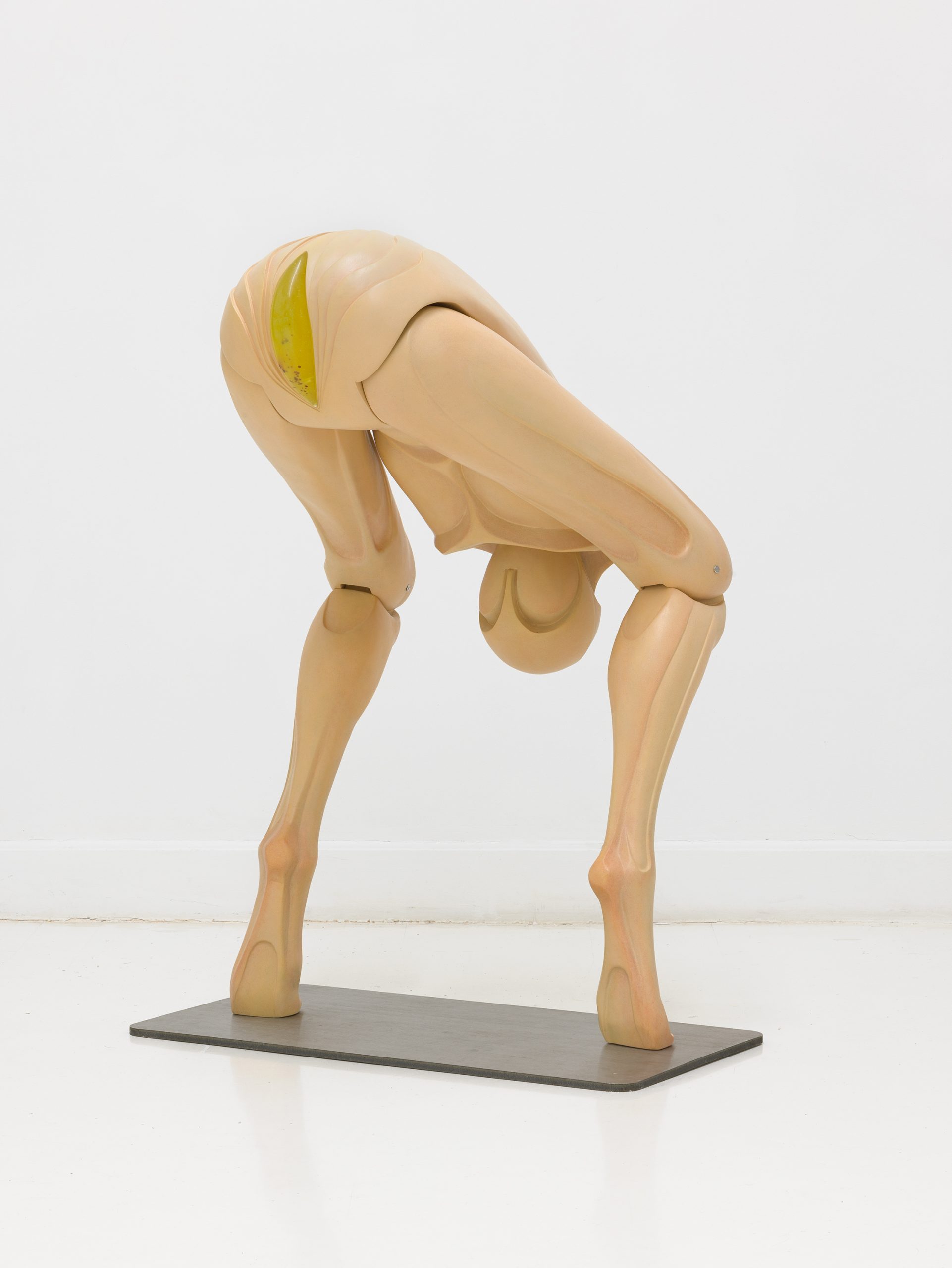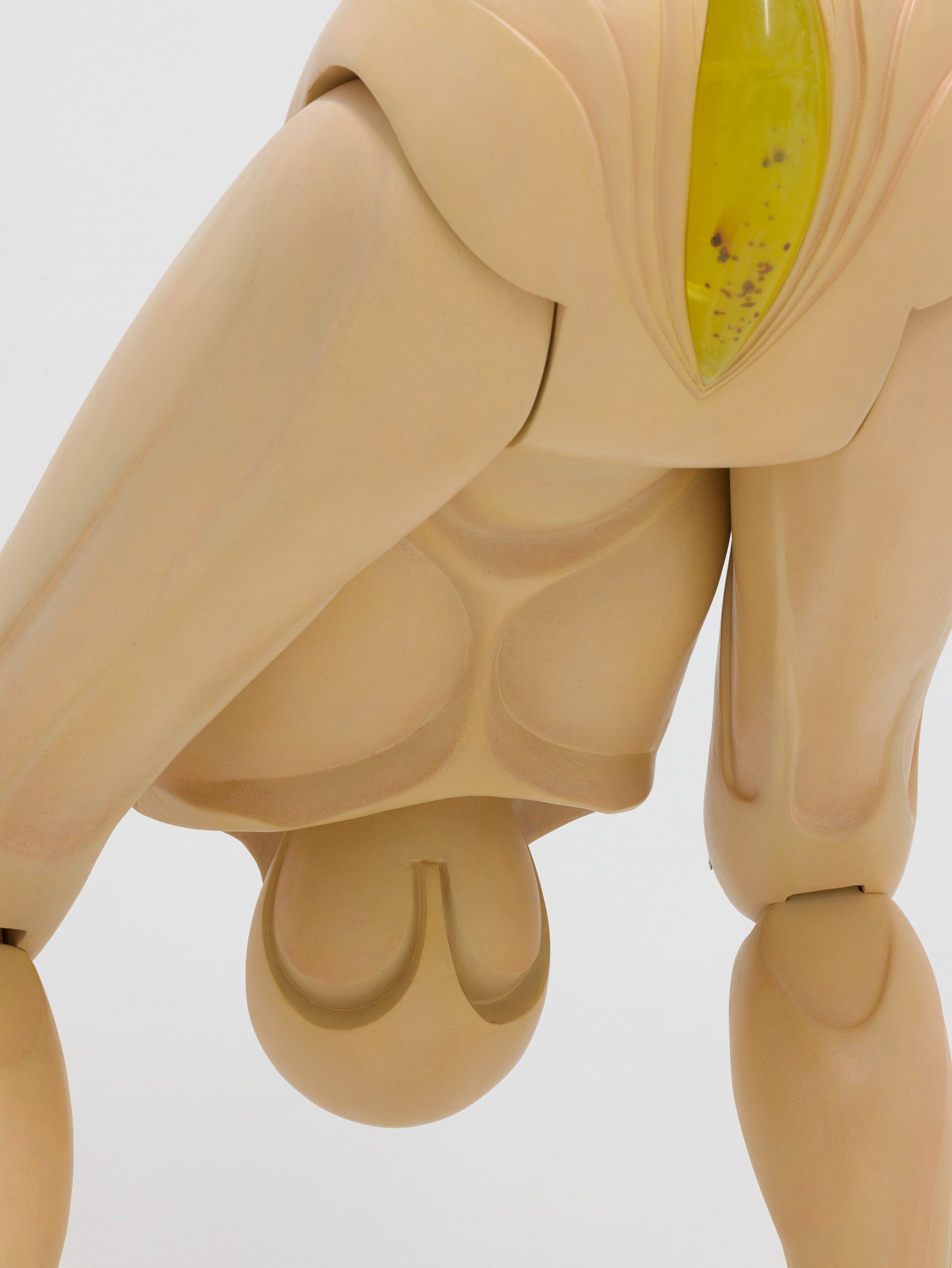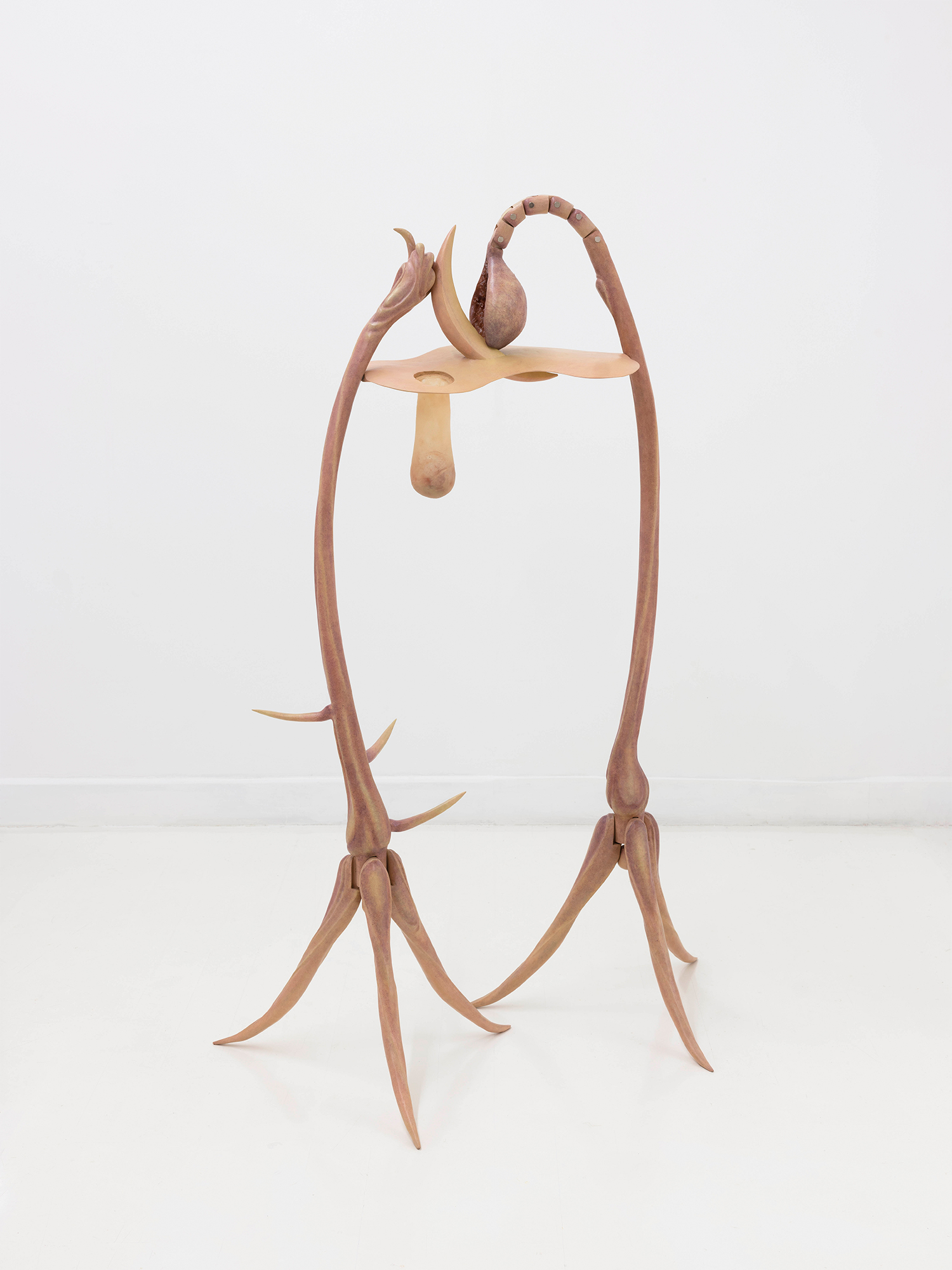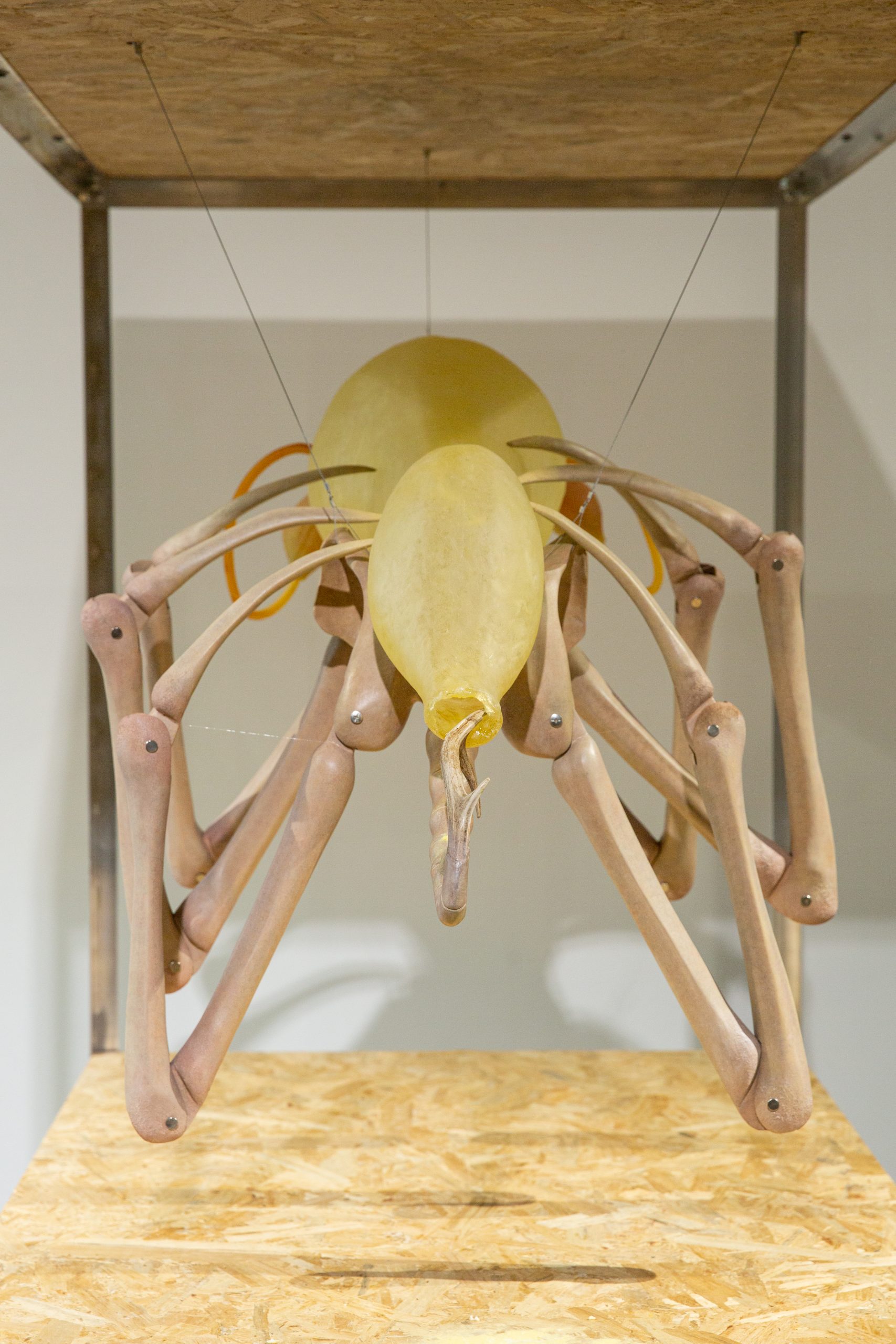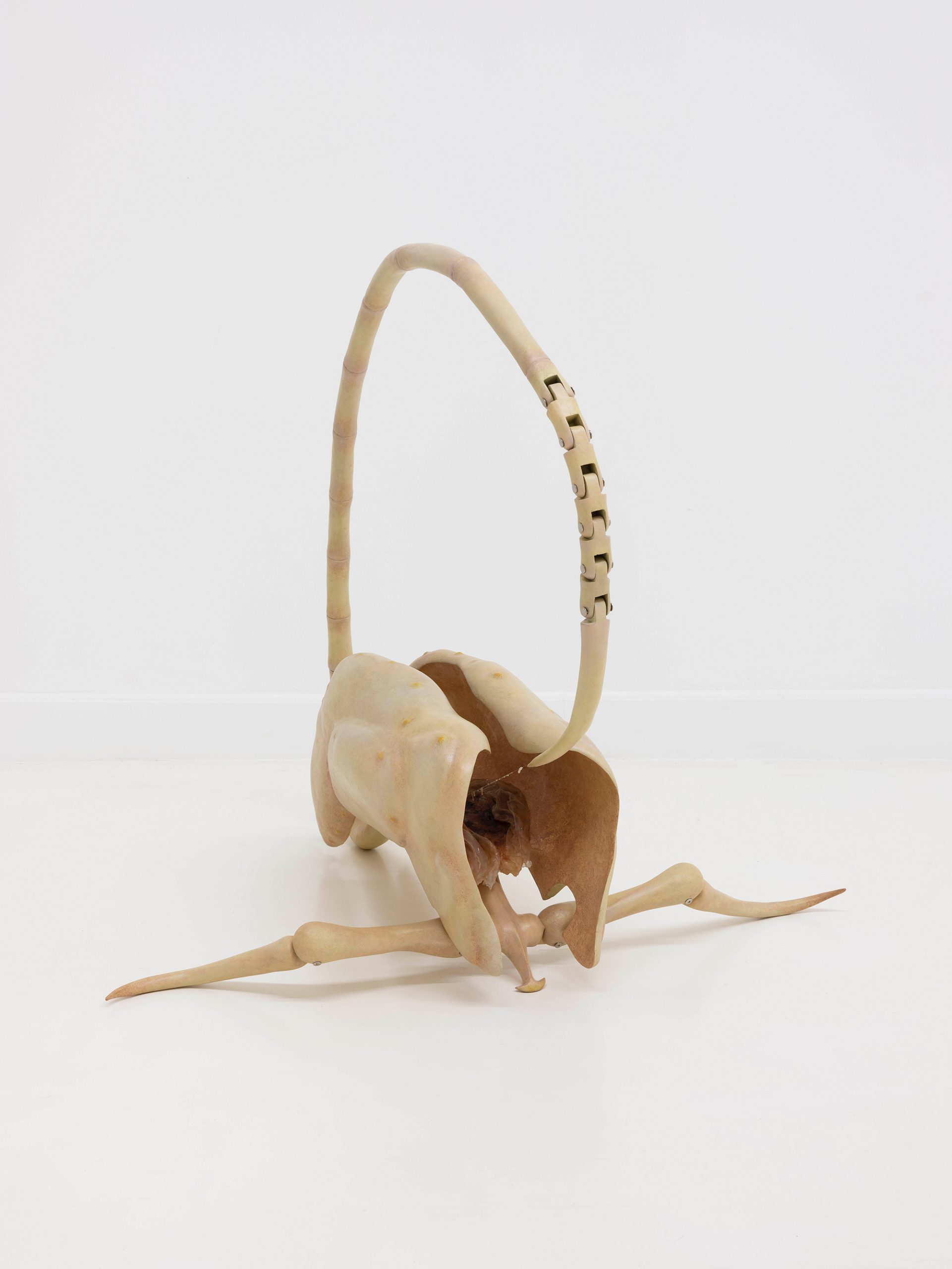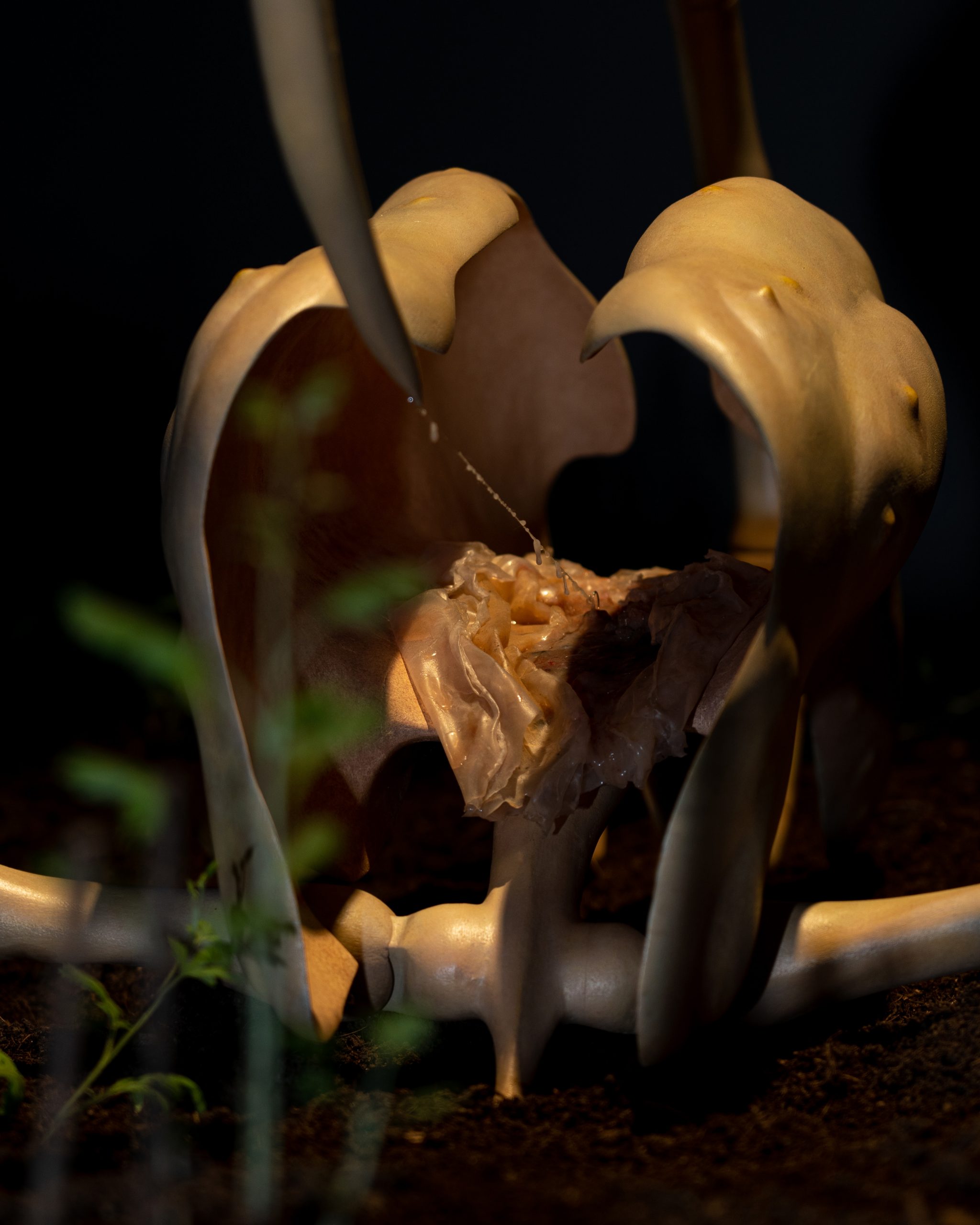
Where things happen #25— July 2024
With her sculptural practice, Chinese artist Liao Wen has widely explored the dynamics of human body interactions and reactions, creating powerful tridimensional metaphors that often unveil similarities with other animals’ behaviors. These sculptural creatures, appearing as a cross between carcasses and prostheses, foreshadow potential extensions or degradation of the human body. They also envision new hybrids between species and between nature and the degradation of industrial relics that surround us.
We meet with her on a muggy, hot day in Hong Kong, where the artist moved a year ago. Like other artists living in the city, her studio is in a reasonably ample space with good light inside those industrial (now multipurpose) buildings where all the artists (and not only) found space in this rapidly evolving city. The neighborhood where Wen works is an area of Hong Kong’s New Territories, where mostly Chinese and locals live, and other artists have found their studios.
As we enter, Liao Wen is in a working mood, preparing for a large solo show at Capsule Shanghai, which will open at their Venice location this September.
Her studio is more like a wood shop. Despite her small and graceful presence, Liao Wen impressively does most of the work herself, designing, carving, and shaping wooden creatures, usually three times her size. She’s not good in maths, she confesses, but to make those sculptures, a lot of engineering is needed, as everything needs to match and interlock in the jointures perfectly. Otherwise, you need to start over again. However, there’s no rendering or digital drawing for her; she uses hand-drawn sketches that are transformed into little maquettes, which help test each part’s joining points and possible movements.
There’s something unique, almost epic, about all this craftsmanship, which results in futuristic creatures that most of the time appear prophetic for a post-human age.
Wen explains that her background is in puppetry. She started her journey into the arts by studying this ancient art in the Czech Republic. Puppetry still holds quite a cultural importance in China, dating back over 2,000 years to the Han Dynasty, and is an essential repository of folklore, myths, and historical tales.
Wen’s creatures appear to come out from some ancient myth or tale.
As she later confessed in our conversation, Wen grew up in the mountains, where nature usually prevails. Still, thousands of years of civilization have taught humans how to cooperate and adapt to natural forces. Her grandparents had a farm there, her childhood memories are mostly connected with lightening fires in the woods and discovering new plants and insects, she recalls.
Nevertheless, as she explains, all of these communities have faced a significant challenge due to mass agricultural production, which has completely disrupted the traditional rhythms and associated norms tied to the natural cycles they used to follow. As one listens to these stories, one realizes Liao Wen’s practice is deeply rooted in her personal background. She grew up in close contact with nature and became aware of some automatic and existential responses to it and biological dynamics. Her work eventually suggests how this “wildness,” inside and outside us, is something innate that we will never be able to entirely repress but ultimately necessary to communal survival.
Liao Wen’s view is very pessimistic (or realistic): to her, humans are innately selfish. Therefore, even when human start to care about the environment and other species or imagine a new model of hybrid coexistence, it’s still from a purely human-centric perspective. “We will never know what a stone or an animal is thinking,” she said.
When we visit her, one of the significant pieces in the show is at the center of the studio.
As Wen explains, this figure was inspired by images of matids ritual. “You know, the male is devoured by the female while they’re reproducing.” The two wood body structures intersect and interlock without a final solution of continuity and unity.
Wen is skeptical about the scientist’s explanation that this is just due to the nutrition substances she needs to feed the newborns. For Wen, this just exemplifies how nature contemplates cruelty, self-defense, and aggression and how every creature is inherently selfish, caring first for its survival and protection. Also, Wen has been exploring this ancient connection between eating, death, and ritual, which manifests in many ancient traditions in the notion of sacrifice as an energy transfer operation.
Wen is now thinking of also add on top something similar to the seeds she found during one of her recent hikes in the mountains around Hong Kong. They look like cotton balls, light and extremely delicate. They were inside a strong shell, she explains, but once they came out, it was so hard to fit them in again: they were coming out again, floating around, driven by a restless need to disseminate, expand beyond themselves, and fulfill their procreation role. Something we should also all feel as humans, perhaps, but the rhythm of the contemporary society has somehow corrupted and obfuscated this need.
As Liao explains, she has also been recently fascinated by this idea of “disgust,” understanding how this is also just entirely a human construction, a notion resulting from a cultural process of purification and removal of something that is otherwise profoundly instinctive and innate in other species. Notably, as she observes, most animals have this instinctive response that allows them to identify what is poisonous. In contrast, other mammals such as cats, dogs, and humans have lost this, which is probably why we had to build those “verbal” structures to describe what is to avoid and what is not. Therefore, disgust is a psychological and aesthetical notion, which then turns into an existential one to support species’ survival.
As we discuss her work, Liao appears very knowledgeable and curious about many biological dynamics. Her mood board, on a table, also reveals various illustrations of animal skeletons and structures accompanied by many anatomical observations.
When asked about her fascination with bodies, she explains that it may have stemmed from a young age, as she developed an unfiltered perception.
Clearly, Liao Wen’s notion of sculpture is not intended to please the eye or pursue any classical idea of beauty; instead, there’s something very dark in it. Her works are characterized by an uncanny and monstrous appearance that seems to make them omens of a time when humans have already gone or transmuted into something completely different.
In this sense, Wen’s sculptures might resonate with what philosopher Byung-Chul Han argued on today’s “purified” notion of beauty.
The works by Liao Wen totally refuse a notion of beauty that, in today’s society of positivity, has been associated with “the smooth,” and which removes any “against”, any negativity, the alien. Wen instead reestablishes and empowers this “other”, this “alterity” of a possible “negativity,” which is necessary for a true sense of reality, and of an idea of art that can truly shake, and have an impact. If “the smooth” is something one just likes, as a shining reflecting sculpture by Koons, Liao Wen, in her art, reestablishes instead the value of the “opposing body” that disturbs a quiet contemplation and appreciation but activates critical questioning and thoughts.
While one side of Wen’s artistic production centers on these creatures and animals, the other directly refers to human corpses, body perception, and intercorporal sensations and reactions. Liao Wen is also very interested in translating into sculpture the complex interrelations between physical and mental conditions and how these reflect and manifest in bodies.
This was the case, for instance, of her recent presentation at Frieze New York 2023, which was also awarded the Focus Stand Prize. Here, the wall reliefs and free-standing sculptures at the presentation delved into bodily perceptions beneath the skin, serving as a filter between the inside and the outside world. By embodying uncomfortable positions and expressing the idea of unease and disconnection, these body structures acted as powerful sculptural metaphors of internal and external bodily sensations and reactions, revealing both conscious and unconscious aspects that regulate and drive our bodies’ responses and movements.
Eventually, in Liao Wen’s upcoming exhibition, those two aspects of her research will merge and blend more extensively. In fact, for the first time, Wen will introduce some human performers who will activate the sculptures.
Wen admits that her sculptures have always meant to move and be moved, but she has been asking herself for a while how to encourage the viewer to do so safely without damaging the work during the show. The best solution was to use trained performers who know how to move them, which was finally possible with the occasion of the show.
Reintegrating in the work in this way also has a ritualistic aspect. Her creatures will be activated in space, becoming powerful resonances of messages and symbolism that will be impressed and deployed into the viewers’ memories. In particular, one of the most ambitious pieces she’s working on for the show is a large-scale structure which is inspired by the skeleton of a whale.
Suspended in the space, it’ll have some traditional drums that the performers will remove, such as body parts, and play around the space. Some bells on the mouth will complement the sound experience, moved gently by the wind as the sculpture floats in the space.
This piece was inspired by the story of a pink whale that last year appeared in Hong Kong’s eastern waters, a rare sighting that has fascinated spectators and intrigued experts that flocked there to see her. Eventually, the whale disappeared, and eventually died; according to some, she was scared and perhaps hurt by one of the many boats of tourists coming to see her. This story sadly resonates with others where humans find whale skeletons in the seashore, they reassemble them and proudly showcase them as a trophy, despite this is also often a sign of death, usually caused by ships or pollution. Once again, for Wen, this is a sign of how anthropocentric is still human behavior, and how an innate violence, despite expressed in different ways, is at the heart of the survival instinct.
Through this work and the show in general, the artist appears searching for an alternative reconnection and understanding of nature. One starts by acknowledging the similarities in body structures and behaviors shared by living beings across different species and then extends to a rediscovery and reactivation of a more ancient spiritual connection with nature, which involves rituals and deeper contemplation.
Reviving the ritualistic level of our relation with nature, its mysteries, and the vast unknown that science is still not accessing Liao Wen’s work seems to suggest alternative harmonious relations between bodies of different species in resonance with nature’s life cycles.
Linking to Foucault’s definition of monstrosity as something “outside” and absolutely “alien,” Liao Wen’s monstrous creatures become ominous presences anticipating or, at least, envisioning alternative future possibilities that already elude all notions of identity and difference within the promise of unsettling subversion for a different evolutionary path.
PHOTO CREDITS
Hesitation,2020
limewood, silicone, ruby
106 x 45 x 91 cm
Photo by Ling Weizheng. Courtesy of Capsule Shanghai and the artist.
Stare, 2022
hand-colored limewood, epoxy resin, stainless steel
110 x 72 x 50 cm
Photo by Ling Weizheng. Courtesy of Capsule Shanghai and the artist.
The Garden of Adonis, 2021
limewood, silicone, poly clay, white crystal, agate, myrrh, anemone
95 x 55 x 144 cm
Photo by Ling Weizheng. Courtesy of Capsule Shanghai and the artist
Blind Hunter, 2021
limewood, silicone, epoxy resin, rubber tube, antler, smelling salts, flocking powder
98 x 85 x 70 cm
Courtesy of the Art Museum of Guangzhou Academy of Fine Arts and the artist.
Uprise, 2021
limewood, silicone, red crystal, pearl
90 ×98 ×87 cm
Photo by Ling Weizheng. Courtesy of Capsule Shanghai and the artist.
Detail of Uprise
Photo by MC Zhang
Courtesy of the artist






















